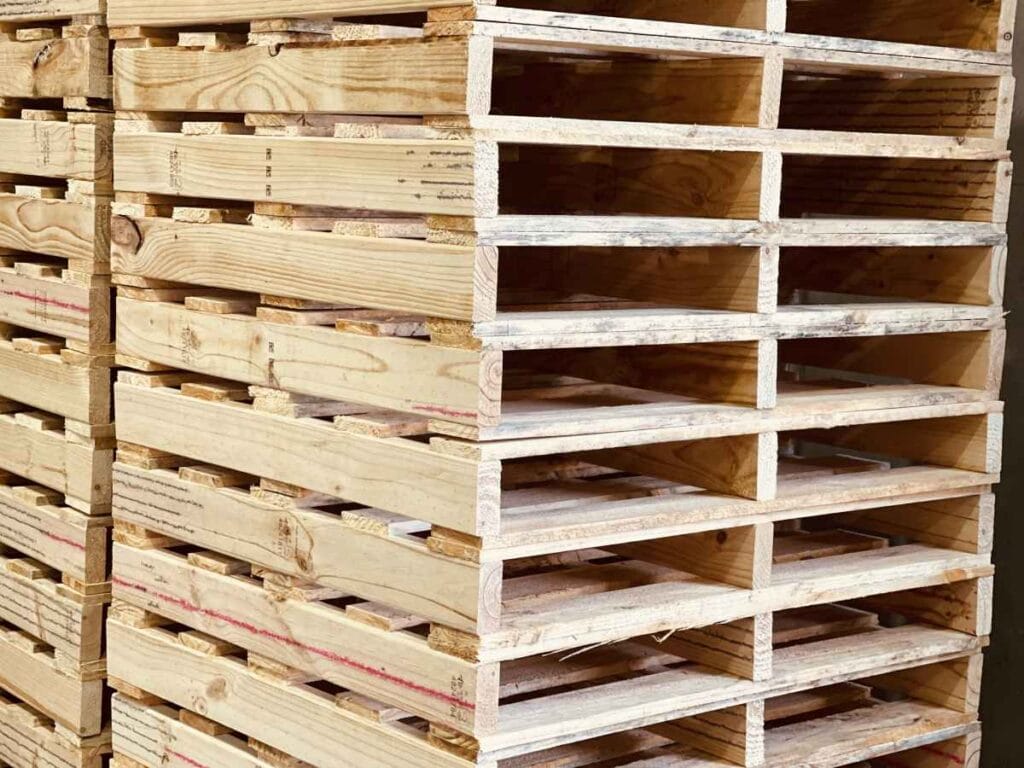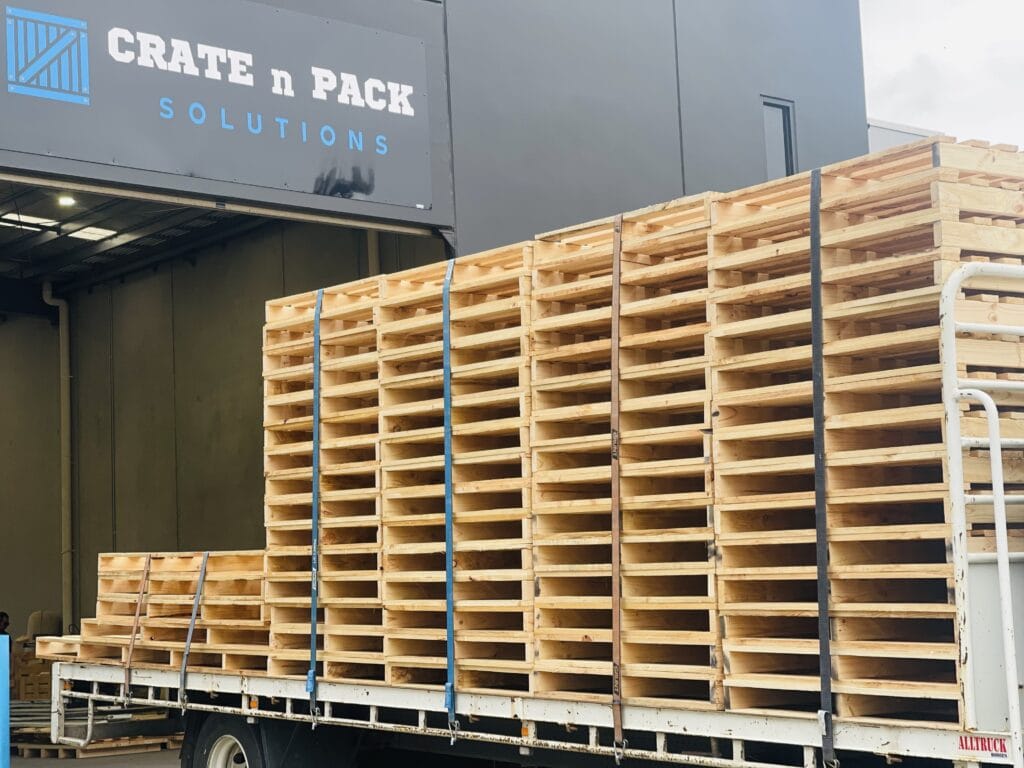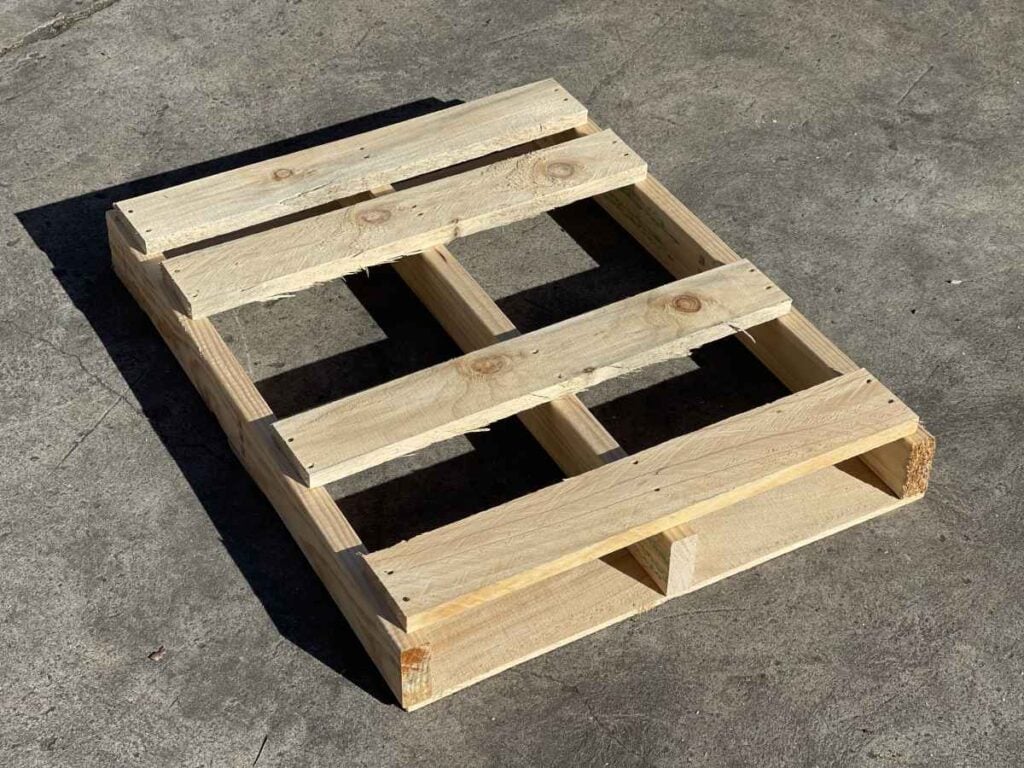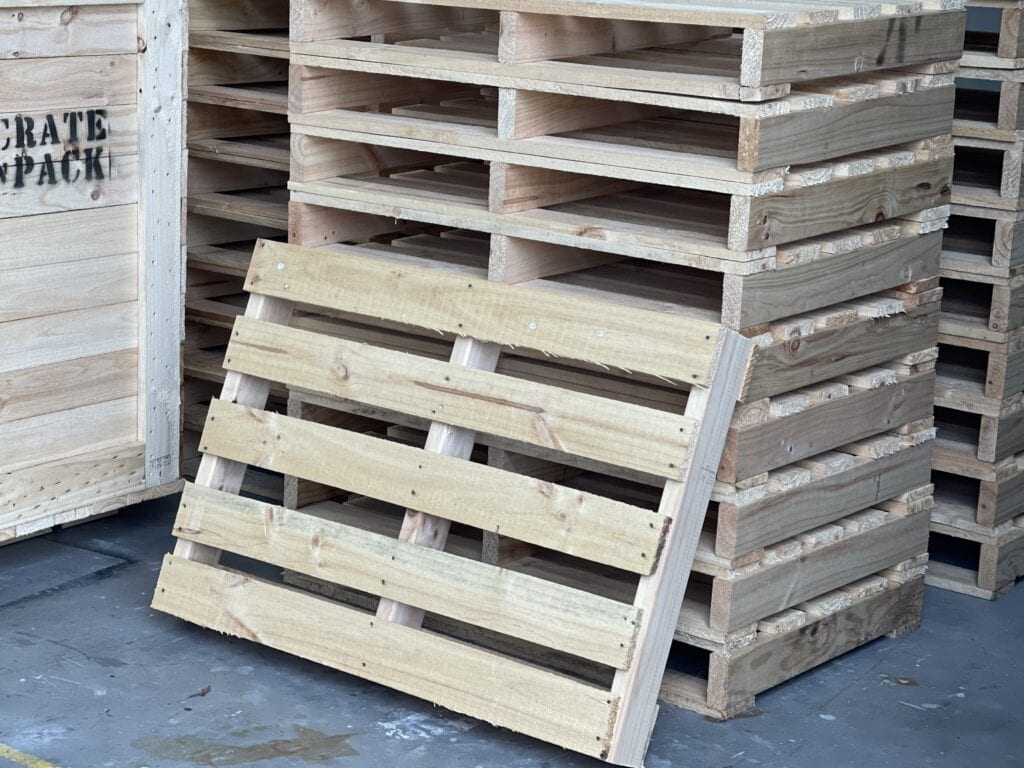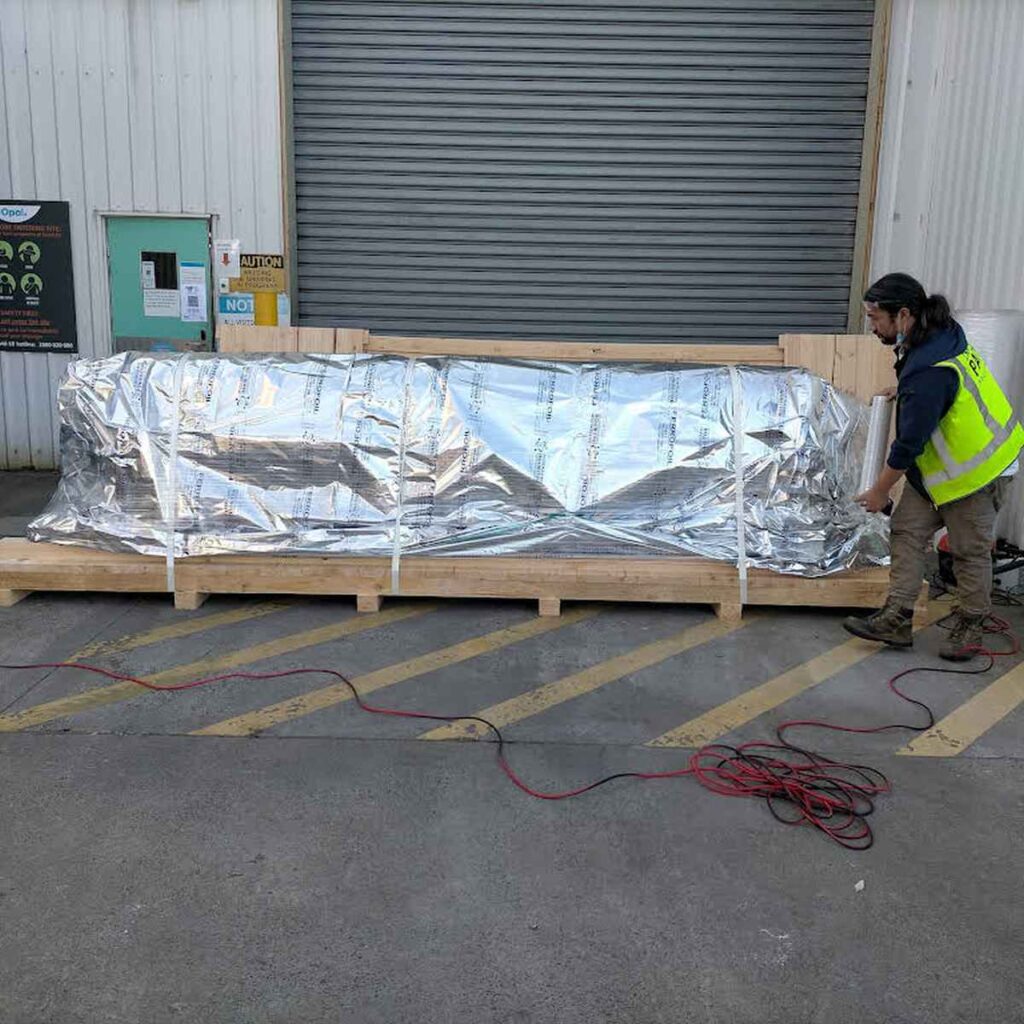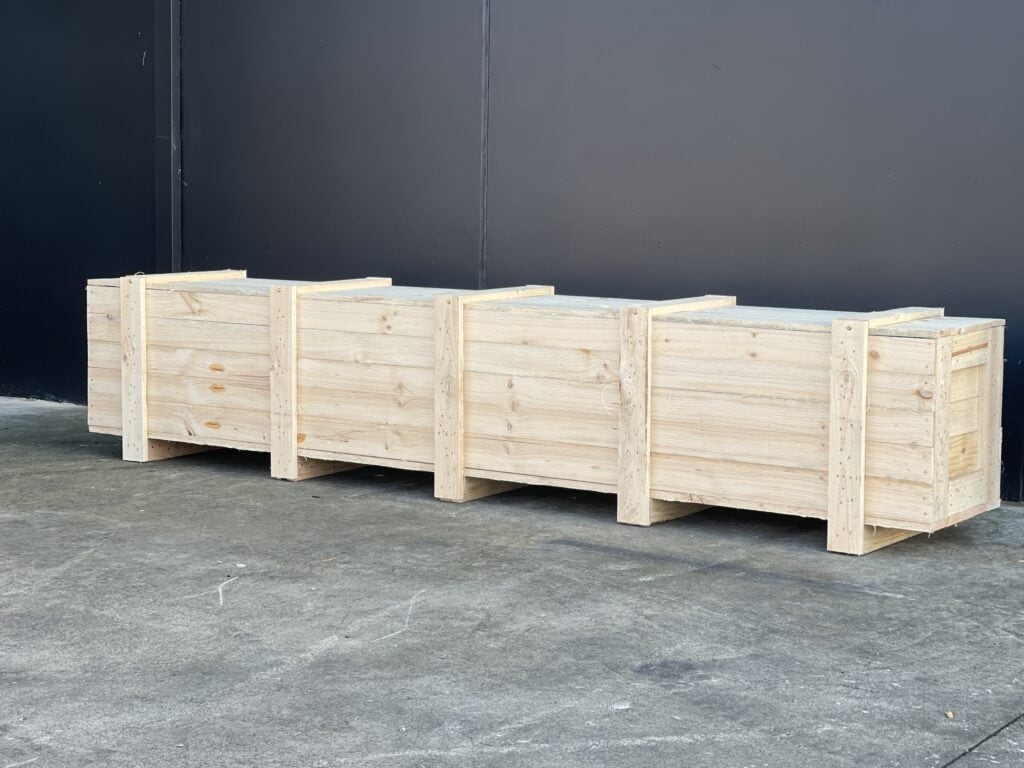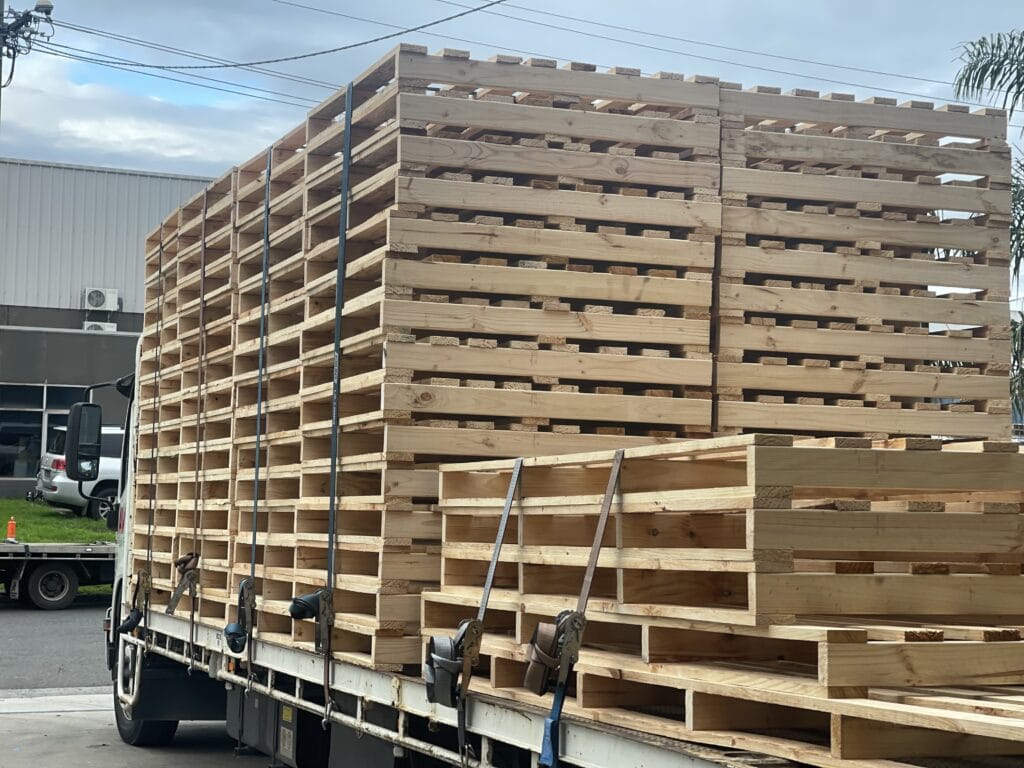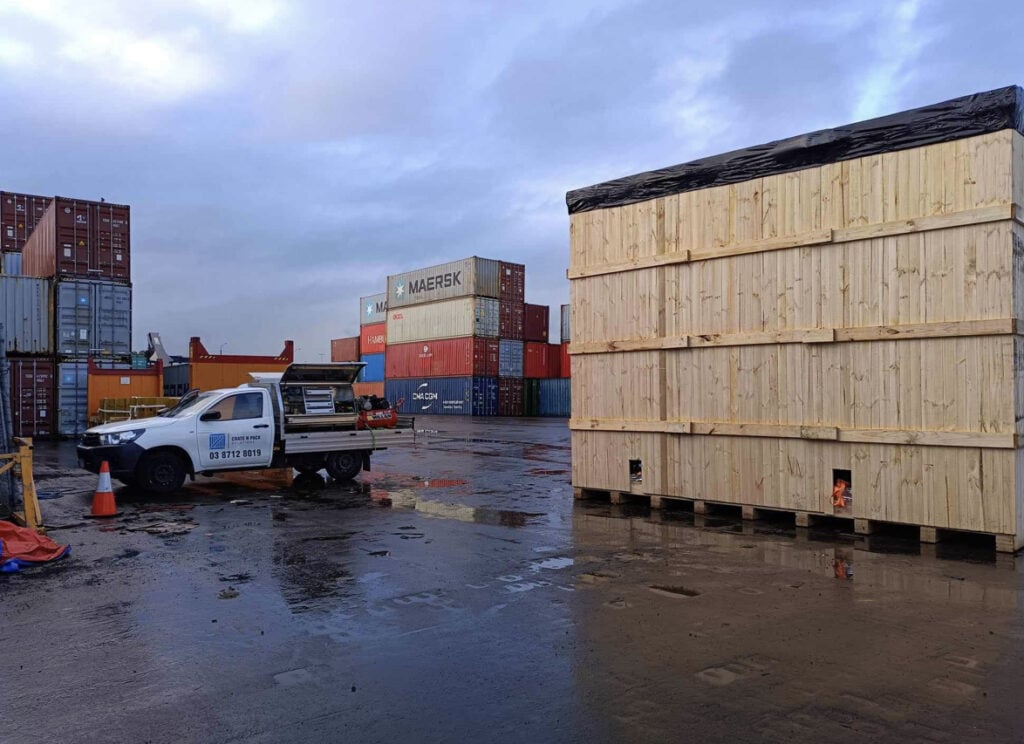Accuracy and speed are of the utmost importance in today's manufacturing and supply chain processes. An autonomous pallet strapping machine has emerged as a game-changing innovation, speeding up and improving the quality of the process of attaching products onto pallets. Strapping and fastening palletised cargo was a time-consuming and labour-intensive process until the invention of this ingenious gadget.
This article examines the idea and workings of an automatic pallet strapping machine, explaining its value and utility in the modern, time-sensitive business world.
A high-tech piece of machinery, an automatic pallet strapping machine may automatically place straps or bands around palletised loads. Its major function is to securely fasten items onto wooden pallets for the duration of shipment.
In order to eliminate load movements and any damage during transport, the machine operates with a high degree of precision, guaranteeing uniform tension and strapping application. The time and effort spent on strapping chores are greatly reduced thanks to this equipment, allowing firms to maximise efficiency and minimise the possibility of human error.
Automatic pallet strapping machines have a number of moving parts that all need to function together for consistent, high-quality results. Automatic strapping heads distribute and tension strapping material, and sealing mechanisms lock the strap in place, all while being transported by a conveyor system that moves pallets. The position of the pallet can be detected by sensors on some machines, which then adjust the tension of the straps.
The user can modify the machine to meet their precise demands by adjusting settings like tension strength and strapping position.
Automatic pallet strapping equipment has many advantages. Machines like these improve worker safety by eliminating hazards like back pain and muscle strain caused by manually strapping items, in addition to the obvious gains in efficiency and output.
Furthermore, the load stability achieved by autonomous machines contributes to the reduced danger of damaged items during handling and transit due to inconsistent tension and precision.
Companies that invest in this technology see a decrease in labour expenses, an increase in the quality of their packaging, and a competitive advantage in their fields. The automatic pallet strapping machine is revolutionising the load-securing and packing sectors as it improves speed, security, and accuracy.
Materials Used in Crafting Pallet Straps
Pallet straps come in a broad spectrum of substances, encompassing polypropylene, woven polyester, extruded polyester, and metallic steel.
Among these, ribbons of polypropylene strapping with widths ranging between 9 to 12 mm are predominantly favoured for routine pallet fastening applications.
This strapping is available in a diverse assortment of colours, sizes, and lengths to suit diverse requirements.
While automated machines are frequently employed to apply polypropylene strapping, manual application is also a viable method.
A specialised variant, textured pallet strapping, serves to enhance the security and safety of delicate goods, such as those encased in cardboard or enveloped in shrink wrap, throughout the transportation process.
The flexibility and smooth-edged construction of this strapping material make it exceptionally suited for mechanised fastening methods.
How to Utilise Packaging Straps?
Packaging straps possess remarkable versatility, making them indispensable for binding a wide array of items securely. From parcels and bundles to e-commerce orders and even certain lightweight wooden pallets, these straps offer a heightened degree of security during transportation.
The lightweight yet robust nature of packaging straps ensures that they can adapt to a myriad of shapes, whether that's a geometrically perfect box or an irregularly shaped package. Thanks to the rolled dispensation of the strapping, customisation in terms of length becomes an effortless task.
Handy Tools for Strapping in Warehouses and Homes
For those who seek to expedite the process of strapping in either a factory or a residential setting, portable strapping kits are a boon. These kits arrive complete with the essential components—ranging from the strap material to tensioners and connectors—facilitating the strapping procedure wherever you might be located.
Choosing the Right Strapping Material
If one aims to fasten heavier objects or large consignments, a heavy-grade variant like Pakit strapping is advisable. Such straps are particularly compatible with pallet banding machines, which supply the requisite tension to secure your goods with unerring precision.
Strapping Precautions to Keep in Mind
While these heavy-duty straps excel in maintaining cargo stability, care must be exercised to prevent potential damage to fragile containers, such as cardboard boxes. It's thus imperative to utilise protective pallet straps specifically designed to preserve the integrity of the boxes.
Options for Further Securing Palletized Goods
Depending on the specific type of edge protectors you opt to use, you can add an additional layer of safety to your palletised items. With the right choice, you can fortify your goods against the rigours of transportation.
Different Types Of Strapping Bands
Strapping has a wide variety of applications. Because of this, it's crucial that you understand what's expected of you when it comes to strapping your products. Strapping comes in a variety of materials and styles to suit a wide range of applications. In the following, we'll examine the various strapping options in further detail.
PP Strapping
When shipping light to medium-weight items, PP strapping is your best bet. The substance used is indicated by the initials PP, which stands for polypropylene. Although black is the most common shade, other colours are available for the strapping. Bundling products, adding an extra seal to a box, or anchoring light pallet loads are all uses for PP tape.
The strap has a breaking load of up to 480 kg (depending on the grade) and comes in a variety of thicknesses and strap widths. With the use of sealing buckles, manual strapping equipment, or semi- or fully-automatic strapping machines, PP strapping can be processed and sealed in a variety of ways. PP strapping is only useful when transit routes are relatively short, and there is no permanent stress on the fastening because of its material qualities, which cause the tension to drop progressively.
Polypropylene strapping, because it can be used by machines, is both cheap to buy and effective at fastening loads.
PET Strapping
When it comes to securing heavy items, nothing beats PET strapping. Polythene terephthalate (PET) is utilised for the securing aid. This material has a substantially higher tensile strength and, as a result, can bear loads of up to 1700 kg due to its higher breaking load.
Strapping tension losses are reduced because of the increased load capacity. Therefore, greater transportation distances can be traversed with ease.
Strapping can be done manually, however, experience shows that using PET strapping and doing it automatically (at least in part) is more productive. PET strapping, depending on its grade, yields and stretches anywhere from 12 to 25% due to stretching effects during the strapping operation.
This makes it ideal for products that experience shrinkage after being strapped, such as moist wood before drying. This further strengthens the securing effect.
The PET strap's high tensile and breaking loads make it an attractive option for usage with heavy goods. Furthermore, it lends itself well to mechanised processing. For the most part, PET strapping replaces traditional steel strapping when it comes to securing wooden pallets.
Steel Strapping
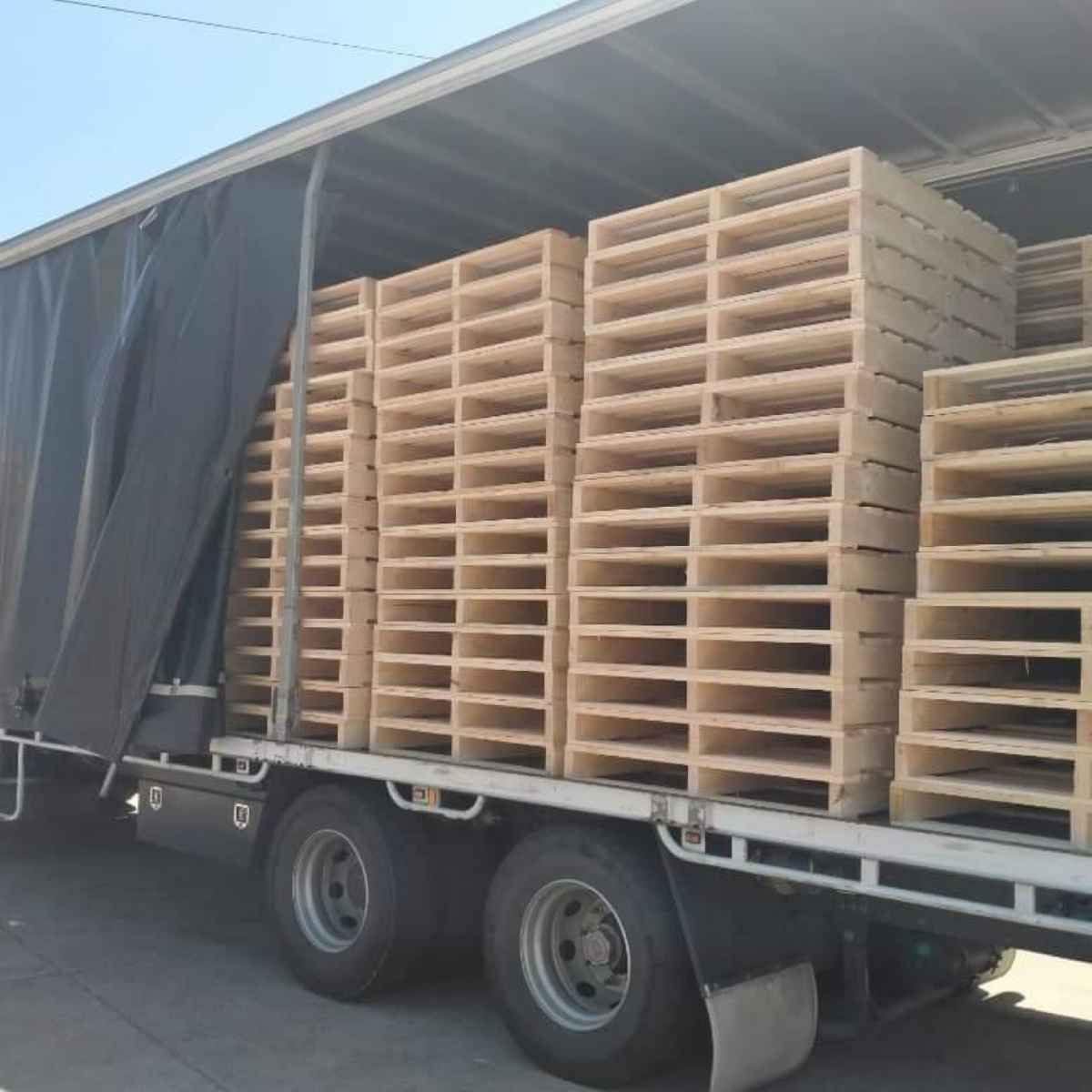
When it comes to moving and securing bulky or sharply edged-items, steel strapping is the way to go. Steel strapping, with a breaking load of up to 3000kg, can absorb the most force of any strapping material.
There is just a tiny bit of tension loss. Therefore, it is perfectly safe to use in any situation, even in extreme weather or under extreme stress from temperature swings. It is also possible to strap steel goods without incident while they are still cooling.
Steel strapping is often done with pneumatic tensioning equipment because of the exceedingly high tensioning capacity required.
Steel strapping is ideal for transporting bulky items and hefty loads. There is no letting up of tension, thus the goods are not vulnerable to shifts while they are transported. Steel strapping is far more expensive than PP strapping and PET strapping, which is an issue here. In addition, closing the closed strapping poses a particular danger of damage.
Textile Strapping
Strapping constructed of polyester filament yarn, commonly known as textile strapping or polyester thread strapping, is gentle on surfaces. The soft surface of the packaging aid is especially effective at preventing damage to the contents of the box.
Tensile strength is exceptional, with a breaking force of up to 2000 kg and comparatively low tension loss.
Strapping made of textiles can be tightened either by hand or using pneumatic tools. Strapping is held in place with the help of ingeniously designed wire buckles.
Particularly persuasive is the use of textile strapping, which may be applied to enormous loads while still being kind to the surfaces of the objects being transported. Textile strapping is a popular tool due to its re-tightenability, adaptability, and ease of processing.
However, the strap cannot be processed mechanically, which is a drawback. Attaching sealing mechanisms manually takes time and is inconvenient in practice. Also, no usage of anything with a sharp edge is allowed.
Importance Of Proper Load Restraint Equipment
It is imperative that whatever is being transported is securely attached so that it does not move during travel, whether it be by rail, sea, road, or air. It is impossible to quantify the cumulative cost of harm caused by unsecured goods, yet it is very high.
Investing in suitable load restraint equipment is essential for ensuring that your cargo is safely transported. Why is it important to have high-quality load restraints? Let's have a peek at it.
Protected Goods
The primary advantage is that it safeguards items from being damaged in transit. Properly secured cargo will not shift about during transport, protecting its contents from scratches, scrapes, and other forms of wear and tear that might occur when objects move unexpectedly.
Losses can be avoided, and quality can be protected if goods are delivered in pristine condition.
Protected People
The safety of the people working with cargo is just as important as the safety of the commodities being transported. Injury or death might result from a poorly secured load. In addition to the things themselves, you can also severely destroy the property of others. Therefore, a badly secured load is a serious risk.
Unsecured loads on the back of trucks, for instance, pose a threat to the driver's life since they could roll forward and breach the cabin. It is possible for a truck to jackknife or roll over if its load is not properly secured, especially when turning bends.
Compliance
Having suitable load restraint equipment also ensures that your loads are secured in accordance with all applicable requirements. High-quality ratchet straps, pallet angles, friction mats, and other weight restraint devices should be among your top priorities.
Conclusion
An automatic pallet strapping machine is a game-changing invention that makes the process of putting things on pallets faster and better. It works with great accuracy, making sure that the tightness and strapping are the same and taking less time and effort. The machine has many moving parts that work together to make sure that the results are always good.
Pallet bands can be made of different materials, like polypropylene, woven polyester, extruded polyester, or steel. Polypropylene strapping with lengths between 9 and 12 mm is often used to secure pallets. Pallet strapping can also be put on by hand, and textured pallet strapping makes fragile things safer and more secure.
Packaging straps can be used to hold a wide range of things, from packages and bundles to e-commerce orders and light pallets. They are strong but not too heavy, and you can easily change their length. Portable strapping kits can help speed up the process in homes and workplaces.
When fastening heavier items or big shipments, it's important to use the right strapping material. Heavy-duty straps like Pakit strapping can be used with wooden pallet banding tools, but fragile containers need protective pallet straps to keep them from getting broken. Goods on a pallet can be even safer if they have edge guards.
There are different kinds of strapping bands for different purposes, so it's important to know what your company wants when it comes to strapping your goods.
PP strapping is the best way to ship light to medium-weight things. Depending on the grade, it can hold up to 480 kg before it breaks. It comes in different widths and thicknesses and can be cut and sealed with sealing buckles, manual strapping equipment, or semi-automatic or fully automatic strapping tools. PP strapping is cheap and works well to secure loads, but it is only useful when the distance to be travelled is short, and the fastening is not under constant stress.
Because it has a higher tensile strength and can hold up to 1700 kg, PET strapping is great for securing heavy things. Since the load capacity has gone up, tension losses in the strapping have gone down. This means that the load can be moved farther. PET binding can be done by hand or by machine, which makes it more efficient.
Steel strapping is great for moving things that are big or have sharp edges. It can hold up to 3000 kg and loses very little strain. It is safe to use in any scenario, even when the weather is bad or when the temperature is changing quickly. Steel strapping, on the other hand, is more expensive than PP strapping and PET strapping, and it's especially dangerous to close the strapping because it could cause damage.
Polyester filament yarn is used to make textile strapping, which is gentle on surfaces, has a breaking force of up to 2000 kg, and loses little tension. It is famous because it can be tightened again, changed, and worked with easily, but it can't be worked with by machines.
Investing in the right load restraint equipment is important to make sure that goods and people dealing with cargo are safe and that all rules are followed.
Content Summary
- An automatic pallet strapping machine significantly speeds up the process of securing products onto pallets.
- The machine performs its tasks with high accuracy, minimising the chances of damage during transport.
- Traditional strapping methods were labour-intensive and time-consuming, making the machine a game-changing innovation.
- This automated technology greatly reduces human error.
- The machine works with multiple moving parts to deliver consistent, high-quality results.
- Sensors on some machines can detect the position of the pallet to adjust strap tension automatically.
- The user can customise settings like tension strength and strapping position to meet specific demands.
- The automatic pallet strapping machine enhances worker safety by reducing manual labour.
- Companies that invest in this technology gain a competitive advantage.
- Load stability is improved, reducing the danger of damaged items during handling and transit.
- The machine is revolutionising the packing and load-securing sectors.
- Pallet straps are crafted from a variety of materials, including polypropylene and metallic steel.
- Polypropylene strapping is favoured for routine pallet fastening applications.
- The strapping material is available in various colours, sizes, and lengths.
- Textured pallet strapping enhances the safety of delicate goods.
- Packaging straps are versatile and useful for securing various items.
- The straps offer heightened security during transportation.
- Packaging straps can easily adapt to irregularly shaped packages.
- Portable strapping kits make strapping convenient in both factories and residential settings.
- Heavy-grade strapping like Pakit is suitable for large consignments.
- Specialised pallet banding machines work well with heavy-grade strapping.
- Precautions should be taken when using heavy-duty straps to avoid damaging fragile containers.
- Using the right type of edge protectors can add an additional layer of safety to palletised items.
- Different types of strapping bands cater to various application needs.
- PP strapping is ideal for shipping light to medium-weight items.
- PP strapping is cost-effective and suited for relatively short transit routes.
- PET strapping is useful for securing heavy items with high tensile strength.
- PET strapping minimises tension losses, suitable for long transportation distances.
- Steel strapping is ideal for transporting bulky or sharply edged items.
- Steel strapping can withstand extreme weather conditions and temperature swings.
- Textile strapping prevents damage to the contents and has a high tensile strength.
- Textile strapping is gentle on surfaces but cannot be processed mechanically.
- Proper load restraint equipment is crucial for secure transportation.
- The cost of damage caused by unsecured goods is substantially high.
- Investing in suitable load restraint equipment safeguards items from damage during transit.
- The safety of people working with cargo is as crucial as the safety of the goods.
- Poorly secured loads can lead to severe accidents, including rollovers.
- Appropriate load restraint equipment ensures compliance with all applicable regulations.
- High-quality ratchet straps and friction mats should be prioritised for load restraint.
- Automated machines often use polypropylene for strapping, but manual application is also possible.
- Strapping has a wide range of applications, making it essential to understand the specific requirements of your products.
- Automatic strapping heads distribute and tension strapping material while sealing mechanisms lock the strap in place.
- Conveyor systems move the pallets during the automatic strapping process.
- Load restraint is crucial whether the cargo is transported by rail, sea, road, or air.
- Straps can also be used for e-commerce orders, providing extra security.
- PP strapping can be processed and sealed in various ways, including manual strapping equipment.
- PET strapping is more productive when applied automatically.
- Steel strapping requires pneumatic tensioning equipment due to its high tensioning capacity.
- Textile strapping is adaptable and can be re-tightened, but manual sealing mechanisms are time-consuming.
- Properly secured cargo protects its contents from scratches, scrapes, and other forms of wear and tear.
Frequently Asked Questions
Pallet strapping, or banding is the process of using a metal or plastic strap to unitize, palletize or bundle products together. Strapping is used in a variety of industries, from shipping large industrial equipment and lumber to reinforcing cases in e-commerce fulfilment centres.
PET, or Extruded Polyester Strapping, is the strongest type of plastic strapping available. This makes PET strapping ideal for securing heavy loads onto pallets without the need to use steel strapping. The breaking strains of PET are relatively high compared to PP strap.
A stretch wrap machine is a piece of equipment that automatically wraps pallets with stretch wrap. This keeps the products housed inside of the pallet contained and safe from damage.
Strapping is commonly used in securing, bundling, and unitising items in many warehouses. Below details the disadvantages and advantages of each strapping material.
If you describe someone as strapping, you mean that they are tall and strong and look healthy. [approval] He was a bricklayer–a big, strapping fellow. Synonyms: well-built, big, powerful, robust More Synonyms of strapping.

